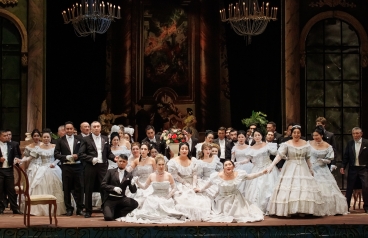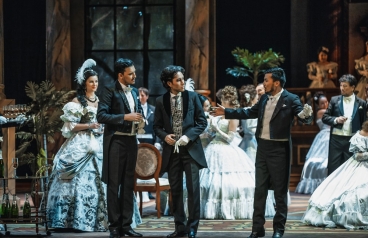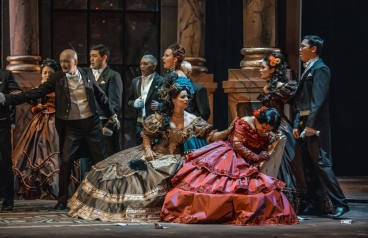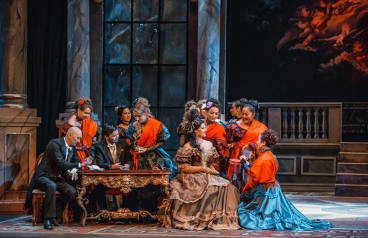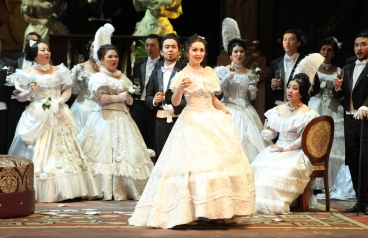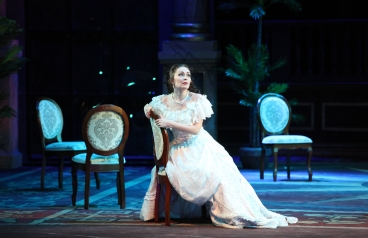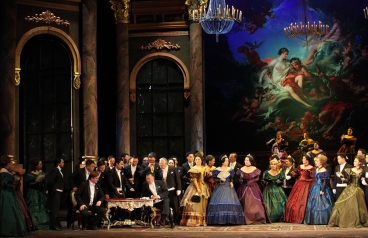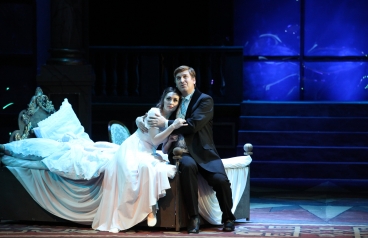LA TRAVIATA
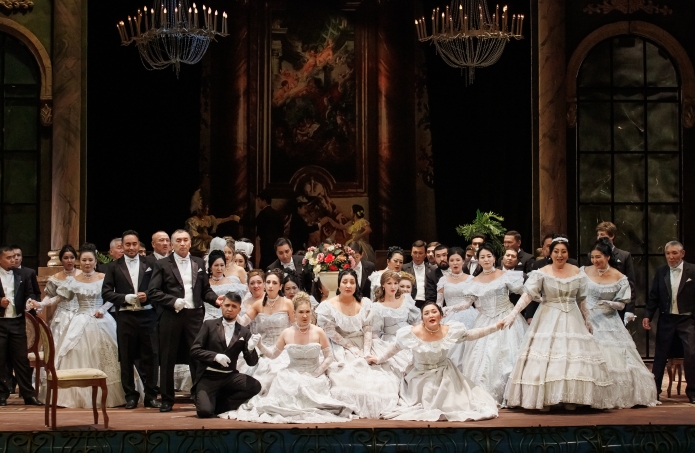
Giuseppe Verdi
"Traviata"
libretto by Francesco Maria Piave
based on the book of Alexander Dumas (the son)
"Lady with Camellias"
Opera in 2 acts
The performance has one intermission
Opera performed in Italian with synchronized Kazakh and Russian subtitles
Symphony Orchestra, Chorus and Ballet of the Kazakh National Opera and Ballet Theatre after Abay
Production Team:
Stage Director - Laylim Imangazina, Honored Figure of the Republic of Kazakhstan
Production Designer - Vyacheslav Okunev, People's Artist of Russia, Laureate of State Prizes of the Russian Federation and Kazakhstan
Chief Chorus Master - Aliya Temirbekova
Chief Choreographer - Gulzhan Tutkibayeva, People's Artist of the Republic of Kazakhstan
History
The plot of the opera "La Traviata" was taken from the novel by Alexandre Dumas (the son) "A Lady with Camellias". The possibility of creating an opera on this literary work appeared at Giuseppe Verdi almost immediately after the publication of the novel in 1848. Verdi was at the premiere and finally established himself in his decision to write the opera. He found a theme close to himself at Dumas - the tragedy of the destiny of a woman’s ruined bourgeois society.
The theme of the opera caused a heated debate: the modern plot, costumes, hairstyles were very unusual for the public of the XIX century. But the most unexpected was that for the first time on the opera stage as the main character, portrayed with undisguised sympathy, the “fallen woman” came out (a circumstance specially emphasized by Verdi in the name of the opera, because the Italian word “grass” is translated exactly that way). Perhaps this novelty was the main reason for the scandalous failure of the premiere.
According to the genre of "La Traviata" - one of the first examples of lyrical and psychological opera. The routine and intimacy of the plot led Verdi to abandon the heroic monumentality, theatrical entertainment, and spectacularity that distinguished his first opera works. This is the composer's most “silent” chamber opera.
The performance was first shown on March 6, 1853 at the La Fenice Theater in Venice.The opera La Traviata appeared in the repertoire of the theater almost from the very beginning of its opening, but now the public is presented with an updated version, which was created in Abay KSABAT in 2016.
“La Traviata” is an opera of a great style,” said Vyacheslav Okunev, production designer at the premiere, already invited to the eighth performance at the Abay KSABAT, - that's why everything in her - and the costumes, and the scenery, and the interior - is done in detail and as accurately as possible. We wanted to see this performance, the audience loved the opera with all my heart and tasted all its charm, because opera is a genre that can stop time, slow down its progress. In the opera, a person has a rest and gets an almost museum-like sensation: time stops for the evening, a huge orchestra plays especially for you, luxurious scenery changes and singers with brilliant vocal abilities change, and this is a very expensive sensation. ”

